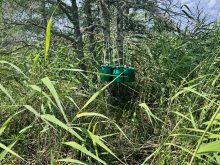The timing of soil sampling may be critical for nitrogen. Nitrogen is often a moving target, especially when soils are moist and warm.
The most accurate measure of plant-available nitrogen would be early spring soil sampling. But fall sampling can be practical because it allows for fall fertilizer applications or pricing of fertilizer in the fall.
There is also time in the fall to soil test as many acres as possible.
Fall soil sampling should usually start at soil temperatures of 5 C. After soils have cooled, little if any nitrogen will be liberated from organic matter and crop residue breakdown.
Read Also

Government, industry seek canola tariff resolution
Governments and industry continue to discuss how best to deal with Chinese tariffs on Canadian agricultural products, particularly canola.
There are pros and cons to sampling either early or late in the fall:
Too early
- Might underestimate available nitrogen if the fall continues warm and moist.
- Aggressive tillage after sampling may release more nitrogen.
- Heavy rain after sampling could leach nitrates out of the rooting zone.
- Ground may freeze, preventing soil sampling or fall fertilizer application.
- Tillage may have been done, which makes sample depth harder to manage, particularly for the zero to 15 centimetre core needed for phosphorus, potassium, pH and micronutrient analysis.
- Excessive weed or volunteer cereal growth may take up considerable nitrogen in the fall, which is hidden from the soil test, but will be available for next year’s crop.
One would expect the early fall sampling strategy to be more successful following cereal crops because they tend to mineralize less organic nitrogen during the fall.
Conversely, pulse crop and oilseed residue may decompose during the warm part of the fall and release plant-available nitrogen.
Recent University of Manitoba studies indicate that late fall soil tests do capture the nitrogen contribution from pea crops. Under eastern prairie conditions of early harvest and warm, moist fall soils, pea stubble rapidly decomposes, whereas drier areas rely on a nitrogen release estimate based on the pea crop yield.
















